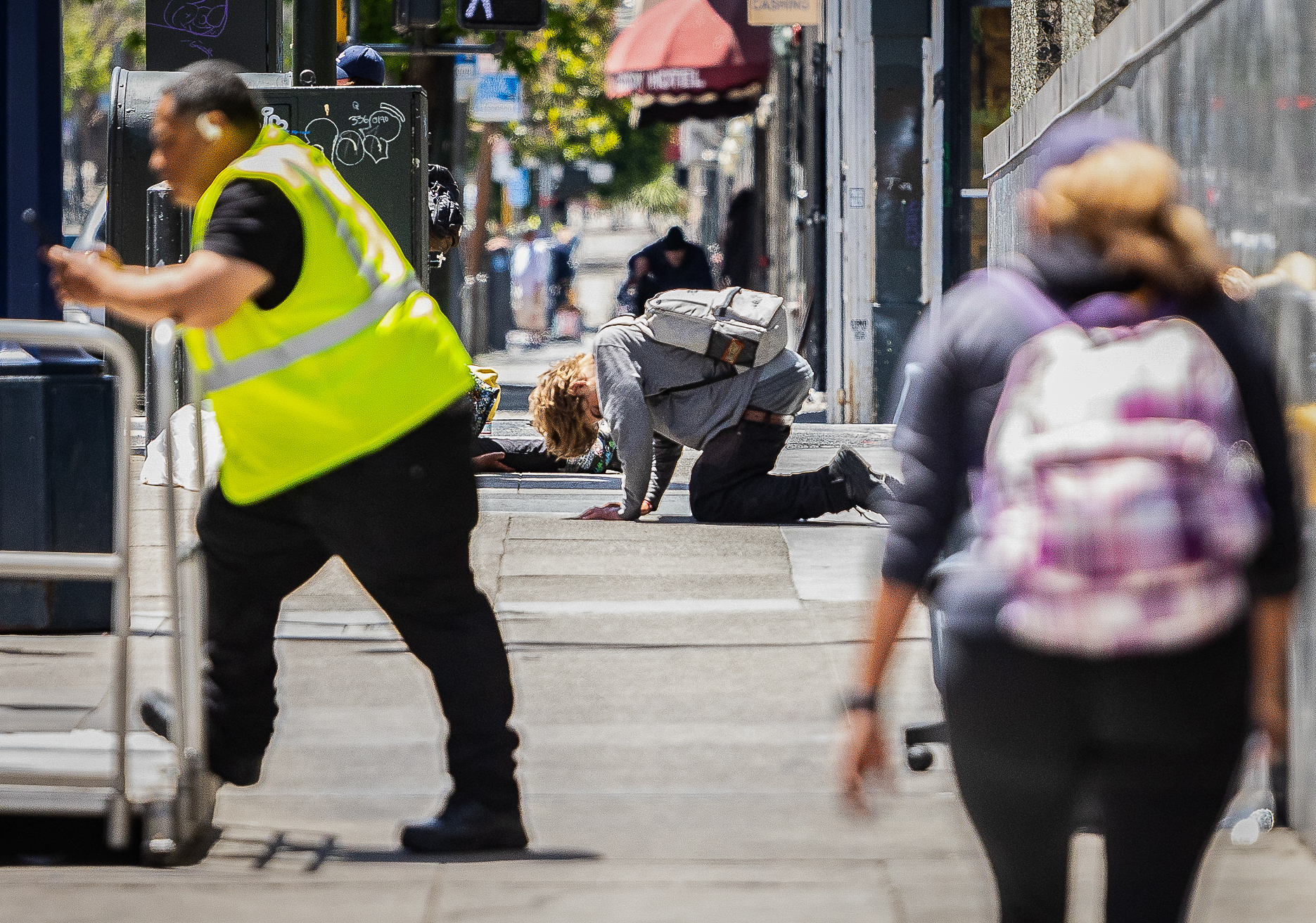Commentary
This upcoming generation, primarily in the United States, will have to deal with an unprecedented mental health crisis. Nowadays, mental health hospitalizations have been increasing in number along with drug use, suicide, and abortion.
Mental health hospitalizations are a key indicator of how young people are doing in their emotional and mental health, say experts, with increasing numbers medicated for reasons such as depression, anxiety, and others. In short, the next generation that is supposed to make or break America is getting weak.
The worst part is that politicians are taking advantage of this epidemic. States like California are even making it easier for children to run away from home and look for institutions that will raise them without parental rights, for example through laws such as Assembly Bill 665, which was signed by the governor last year. Additionally, another law known as Assembly Bill 223 allows children to change their name and gender without parental consent.
One more bill—not yet passed—that all Californians should be aware of is Assembly Bill 1955, which Assemblyman Bill Essayli says is a “dangerous parent secrecy bill,” trying to conceal information from parents about their kids, who are being brainwashed by our government in schools with gender ideology.
Drugs are part of the problem when it comes to mental health and family stability. It is already well known how much drugs like fentanyl and other narcotics have murdered and destroyed lives, but now it is the leading cause of death in America for ages 18 to 45. The pharmaceutical and medical industries may share the blame for this, as some prescribe patients with pain killers that get them addicted, which makes them look to other substances on the street.
Cities all over the United States are now trying to reduce drug addiction by providing addicts with needle distribution centers. How does this work? Providing addicts with the tools to potentially overdose is reducing drug addiction? Cities all over California like San Francisco and Los Angeles are doing this. Here in Orange County, organizations in the city of Santa Ana want to provide needle delivery services for people who are suffering from addiction to injectable drugs like heroin, morphine, and methamphetamine, drugs which can all be laced with fentanyl. The fact is, these “safe” injection programs are only feeding the beast of illicit narcotics abuse.
So how do these drugs even get into the United States? Most are being trafficked across the open southern border. The majority of drugs like fentanyl, heroin, and cocaine don’t originate from the U.S., but from foreign countries where the ingredients are harvested.
Interview With Colonel Sergio de la Peña
I had the opportunity to talk about this with former Deputy Assistant Secretary of Defense for Western Hemisphere Affairs Colonel Sergio De La Peña.
Q: What can you tell me about the marijuana that’s being produced?
Colonel de la Peña: Marijuana was originally grown in fields. However, now there’s a lot of technology that has been increasing the THC levels in marijuana and there’s not a lot of regulation for this. Marijuana can be as potent as cocaine depending on how you hybridize it.
Q: How about fentanyl?
Colonel de la Peña: Fentanyl is a completely different animal. The addictive nature of fentanyl is extreme. It takes 2 milligrams for a lethal dose, as opposed to cocaine, it’s something like 6.5 grams, and 200 milligrams for heroin. Carfentanil takes 2 micrograms to kill you. What makes this even worse is that people are selling heroin and cocaine with fentanyl. There’s a reason for fentanyl and why it’s being produced, for severe pain. It’s just being abused.
Q: Where is this fentanyl being produced?
Colonel de la Peña: Fentanyl is a synthetic opiate produced in a lab from precursors that come from the pharmaceutical industry primarily from China. For illegal street sales, it is made in makeshift labs, many of which originate in Mexico. Fentanyl also comes from China in final pill form and distributed throughout the world with its principal market in the United States. Fentanyl is a synthetic opiate meaning not plant-based. Opium comes from a poppy bulb—once you refine it, you can make it into heroin. Opium poppy is grown in places like Afghanistan, Mexico, Columbia, some in Pakistan, in areas where coffee is grown, generally with an elevation of 5,000 to 8,000 feet above sea level with a wet climate. Then it can be processed into opium or heroin. However, coca plants, which produce cocaine, that are more profitable, come primarily from Bolivia and Peru [or] Colombia.
Interview With Dr. Sandra Martinez
I had an in-depth conversation with Dr. Sandra Martinez, an author and naturopathic doctor whose daughter tragically died from a fentanyl overdose.
Q: Tell us the story of your daughter.
Dr. Martinez: Her name is Qarinna. She was a normal healthy girl, got diagnosed with a stomach illness, and what doctors typically do is they play medicine, so they gave her a lot of pain pills. They didn’t really find a way to treat the issue, so they gave her a lot of opiates for five years and [tested] her. When that all failed, they should have right away done a mental health test on her to see if she was an addictive personality, because she did have trauma from losing a son. She did have depression, she had all those underlying issues that could create addiction really easily, to numb the pain. So, they didn’t do that, and after over five years of them prescribing pain pills, she became an addict. When she wanted to get better help and real treatment to get off the pain meds, their treatment was so aggressive that she didn’t trust them. That’s when street drugs came in. ... It was easy for people on the street to say, “Well they’re already giving you morphine, they’re already giving you fentanyl in your fentanyl drips, they’re giving you fentanyl lidocaine patches ... so let’s just give you what they’re giving you, but a street value. So when doctors cut you off without finding real help, they leave you floundering like a fish with no water. For Qarinna, it was “let’s get my 10-dollar fix.”
Q: How did her opiate use affect her mental health?
Dr. Martinez: When the drugs are in your system as an opiate consumer, it affects your body in every way. It affects your sleep pattern, your eating, how you think. ... If you’re already dealing with emotions, and [the] drugs start to lower the serotonin and the dopamine, the body really starts to need more. ... It affects your physical body because your stomach doesn’t work anymore, your digestion doesn’t work. It hits you physically in all those areas. When street drugs [are] introduced, your body starts to sweat, your nervous system starts to react, you need something, and the doctors wouldn’t give her anything.
Q: You were talking about how the doctors could have prevented this situation by having Qarinna take a test to see if she had a tendency for addiction to opiates. How do you think that these types of situations of addiction to drugs can be avoided?
Dr. Martinez: I think we need more accountability from the doctors. They need to be under strict guidelines of how much they’re giving out. We need to reverse Proposition 47, we need to have penalties for drug dealers, we need to force someone who’s using [to choose] jail or detox or rehab center. It’s either being locked up in an orange suit and chains or going to rehab and getting therapy, and in that therapy they need to have quality people that work there. I will add, inside these therapy institutions that do rehab, it can’t just be about detox and letting them binge in front of a TV. ... They need spiritual guidance, they need people who are very deep rooted in the word of God. ... You need people who can really see and know, what is that root [problem]?
Dr. Martinez said that when somebody like her daughter gets addicted and tries to get into treatment with her IEHP state insurance, along with a person who has an HMO or PPO, her daughter would be last in order to get it. This caused Qarinna to hop from hospital to hospital, from different cities to different counties in order to get meds. When all else fails and the medical community has nothing to give, the option is either to suffer in pain by detoxing on a hydration drip or go to the streets for illicit drugs to replace the opiates. So as a result, she resorted to drugs on the street which were easier and faster to get.
It is a shame to see how detrimental substances have tainted our world. If action is not taken to prevent more overdoses and mental health problems induced or worsened by these drugs, our nation will fail to remain great.









